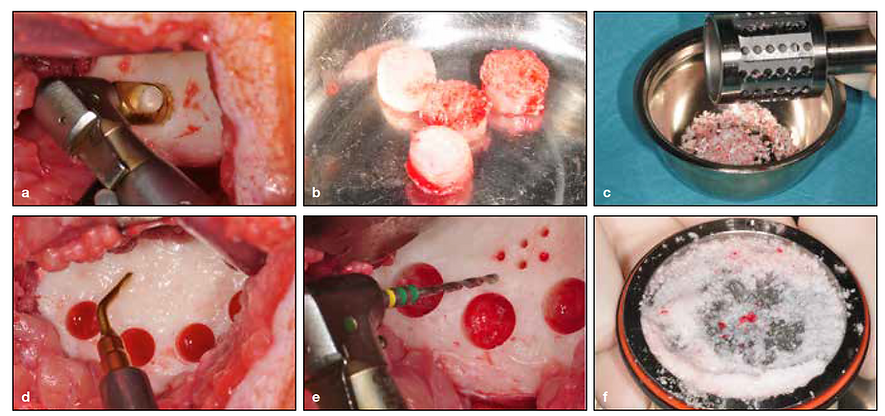Osseointegration, Biomaterials, and PRF
An Advanced Course on Osseointegration and Selecting Appropriate Biomaterials for Bone and Periodontal Regeneration including PRF
with Dr. Richard Miron and Quintessence International


Advanced Course in Osseointegration, Biomaterials, and PRF
In affiliation with Quintessence Modern Implant Dentistry
New Date
January 8-10, 2026 Dallas, Texas
August 13-14, 2026 Washington, DC
December 11-13, 2026 Fort Lauderdale, FL
Course Location in Dallas, Texas: January 8-10, 2026
Course Location:
909 Lake Carolyn Pkwy #1800, Irving, Texas 75039
Hotel Booking Link:
TBA
“This is our most Advanced Program in PRF + Biomaterials and was designed to provide clinicians with thorough knowledge on when to utilize which biomaterials in clinical practice.”
Its content is derived from Dr. Richard Miron's best-selling textbook!!
Course Description
New and innovative biomaterials are being discovered or created in laboratories at an unprecedented rate, but many of them remain entirely foreign to practicing clinicians. This 3-day weekend #2 of the MID implant masterclass addresses this gap in knowledge by summarizing some of the groundbreaking research performed to date on this topic and providing case examples of these biomaterials at work. The course begins with a review of the biological background and applications of bone grafting materials utilized in dentistry. The principles of guided tissue and bone regeneration are covered in detail, including many recent advancements in barrier membrane technologies as well as the use of platelet-rich fibrin and various growth factors, and many next-generation materials that will optimize future bone and periodontal regeneration. The final section of the course is designed to help clinicians select appropriate biomaterials for each specific regenerative protocol. Much like one implant size and shape cannot be utilized for every indication in implant dentistry, one bone grafting material, barrier membrane, or growth factor cannot maximize regenerative outcomes in all clinical situations. This course teaches clinicians how to utilize biomaterials in an appropriate, predictable, and evidence-based manner. The final half-day of this 3-day lecture will include Hands-on blood draws to learn PRF technology and the ability to make sticky bone and PRF membranes for routine implant dentistry cases.
Specific Aims
-
Classification of bone grafting materials. Current uses and percentages utilized materials in North America
-
When autogenous, when allografts, when xenografts, and when alloplasts?
-
Understanding Platelet Rich Fibrin, its use in soft and hard tissue regeneration
Unfortunately, the majority of biomaterial education provided to clinicians in private practice is conducted by sales reps. Owing to their limited biomaterial portfolio and knowledge on the topic, often incorrect decisions are made by the treating clinician. This course provides an evidence-based decision-making process for those who wish to maximize either bone or periodontal regeneration.

Course Outline:
Day 1 Objectives
Understand the different available options for dental implants, bone grafts, and their uses. Understand when to utilize each class of bone grafting material appropriately
9:00-10:30: Biomaterials, dental implants, and their effect on immune health and tissue integration. How to optimize regenerative strategies by minimizing immune responses. How to supplement patients with antioxidants, vitamin D, and other vitamins to minimize graft/implant failure.
10:30-10:45: Coffee break
10:45-11:30: Fundamentals of Osseointegration. Learn the history of osseointegration and also the studies surrounding what has been discovered and improved over the years.
11:30-12:00: Classification of bone grafting materials. Current uses and percentages of bone grafting materials in North America. Why do we use autografts versus allografts, versus xenografts versus synthetic materials.
12:00-1:00: Lunch break
1:00-1:45: Autogenous bone, the gold standard of bone regeneration. Importance of harvesting techniques. When block graft, when particles. The bone scraper and its simplistic use in implantology. Introduction to the concept of bone-conditioned media (BCM).
1:45-2:30: Allografts, the standard replacement material. Differences between freeze-dried bone allografts (FDBA) and demineralized freeze-dried bone allografts (DFDBA). Clinical uses of FDBA versus DFDBA. When to use DFDBA versus FDBA? Understanding that the processing technique of bone allografts is extremely important for bone-inducing potential and that not all allografts are the same.
2:30-3:00: Xenografts – why are they so heavily utilized in North America? What are their advantages and disadvantages. Clinical cases presented with their relative indications.
3:00-3:15: Break
3:15-3:45: Synthetic materials – uses and limitations. Osopia, the next generation, and first osteoinductive synthetic bone graft.
3:45-4:15: Tetranite, a novel bone adhesive that adheres dental implants directly to bone giving optimal primary stability of dental implants. Discussion on the future of 3D-printed bone grafts
4:15-5:00: Barrier membranes, when non-cross-linked, when cross-linked? When non-resorbable? When titanium? Expert discussion with case presentations from the leaders in the field.
Day 2 Objectives – Growth Factors
8:30-9:15: Enamel matrix derivative (Emdogain) and its effect on periodontal regeneration. Osteogain, a next-generation growth factor for periodontal regeneration.
9:15-9:45: Growth factors for bone regeneration. BMP2 and BMP9. Uses and applications. When to replace autogenous bone harvesting?
9:45-10:00: Coffee break
10:00-12:00: Advanced concepts in platelet-rich fibrin (PRF). Understanding Platelet Rich Fibrin. From basic research to advanced clinical concepts: Updates from the Miron Research Lab.
12:00-1:00: Lunch
1:00-4:15: Advanced concepts in platelet-rich fibrin (PRF) (continued). Understanding Platelet Rich Fibrin. From basic research to advanced clinical concepts: Updates from the Miron Research Lab.
4:15-5:00: Clinical recommendations and guidelines for selecting appropriate biomaterials for bone and periodontal regeneration in an appropriate, predictable, and evidence-based manner. Evidence discussing what biomaterials to use for extraction sockets, sinus augmentations, GBR procedures, around implants, periodontal regeneration, and recession coverage.
Day 3:
8:30-12:00 HANDS-ON Phlebotomy, Blood Draws, and Clinical Uses of PRF
The course usually concludes at 12:00pm but the instructors will stay on as long as needed to help the participants!
